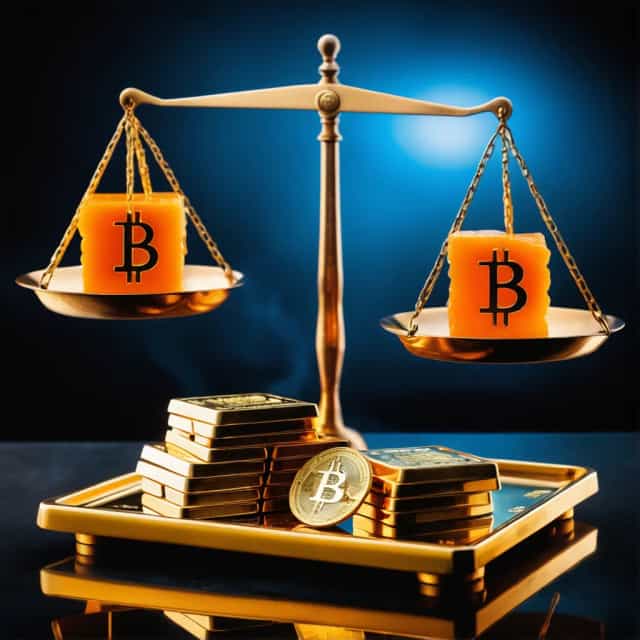
Image source: Block Media
Gold Prices Exceed $4,000 Per Ounce, Signaling Trust Erosion in Global Systems
Gold has officially surged past the historic $4,000-per-ounce mark, setting a new record that highlights its status as a financial safe haven in times of uncertainty. This milestone isn't merely a reflection of market volatility—it's a profound indicator of mistrust in global governments, currencies, and centralized systems. Historically, gold price spikes have often emerged during periods of profound economic, political, or systemic crises, and the current surge seems to echo this pattern.
Experts are interpreting this rally as more than just routine safe-haven buying; it represents a widespread erosion of confidence in traditional systems. On November 8, financial newsletter publisher Andrew Lokenauth shared an insightful compilation of historical moments on X (formerly Twitter), tracing how gold has reacted during other crises throughout history. These precedents provide critical context to today’s events.
Historical Moments Marked by Gold Surges
Throughout history, gold prices have skyrocketed in response to destabilizing crises, acting as a reliable barometer of global sentiment. Some key historical episodes of significant gold rallies include:
- The Crisis of the Roman Empire (235–284 AD): Amid political instability and excessive minting of debased currencies, the Roman Empire faced economic fragmentation, causing gold to become the preferred asset of value.
- The Decline of the Spanish Empire (17th Century): Despite its colonial acquisitions of gold, the Spanish Empire suffered economic stagnation and erosion of global dominance due to structural weaknesses and inflation.
- The French Revolution (1789): Inflation and political upheaval rocked France, catalyzing gold's rise as the monarchy lost power and investors sought refuge from a collapsing economy.
- The Hyperinflation of the Weimar Republic (1921–1923): War reparations and reckless monetary printing turned gold into an unparalleled store of value, as paper money became worthless amid extreme hyperinflation.
- The Collapse of the Bretton Woods System (1971): President Richard Nixon’s decision to end the gold standard severed the dollar's connection to gold, igniting fears of currency depreciation and driving a tremendous surge in gold’s price.
- The Dissolution of the Soviet Union (1991): The Ruble’s catastrophic devaluation following the collapse of the USSR triggered investor migration to gold as stability in the region disintegrated.
Each of these historical milestones demonstrates gold's unique ability to maintain trust and value during economic collapses, regime changes, and systemic failures. It serves as more than a financial asset—it is a symbol of enduring stability.
What’s Driving Gold’s Current Rally?
Today’s unprecedented gold prices stem from more than just geopolitical risks and market speculation. Analysts attribute this surge to several critical factors converging simultaneously. These include rising inflation, uncertainty surrounding monetary policy, expanding U.S. debt ceilings, and declining faith in central banks.
Jacob Stone, a prominent financial historian, explains, “Gold has always served as the ultimate asset of trust. When people buy gold, it means they’ve lost faith in everything else.” This statement underscores the essence of gold’s enduring appeal in turbulent times.
Inflation remains a key driver, eroding the purchasing power of fiat currencies and pushing investors toward tangible assets. Simultaneously, growing disillusionment with government debt management and central banking systems is further incentivizing the shift to gold. The recent U.S. debt ceiling crisis amplified concerns about unsustainable fiscal policies, exacerbating the appeal of alternative assets.
Interestingly, Bitcoin, often heralded as “digital gold,” has also been on the rise in parallel with gold’s ascent. The cryptocurrency is gaining traction among investors seeking decentralized stores of value, especially as skepticism toward traditional systems deepens. This development highlights a growing trend where digital assets are complementing gold as havens of trust.
Gold's Role in Uncertain Times
Gold’s recent milestone reinforces its reputation as the ultimate financial refuge amid global uncertainties. When stability falters, gold shines brightest, offering assurance to investors navigating turbulent times. This phenomenon has been consistent across centuries—a trend that’s unlikely to fade.
As trust in traditional systems continues to waver, gold’s position as a reliable store of value grows stronger. Whether as a reaction to inflation, geopolitical instability, or systemic economic concerns, gold provides timeless security in an era where confidence in prevailing systems seems increasingly fragile. Its $4,000-per-ounce valuation isn’t merely a market statistic; it’s a symbol of shifting trust and enduring resilience.










